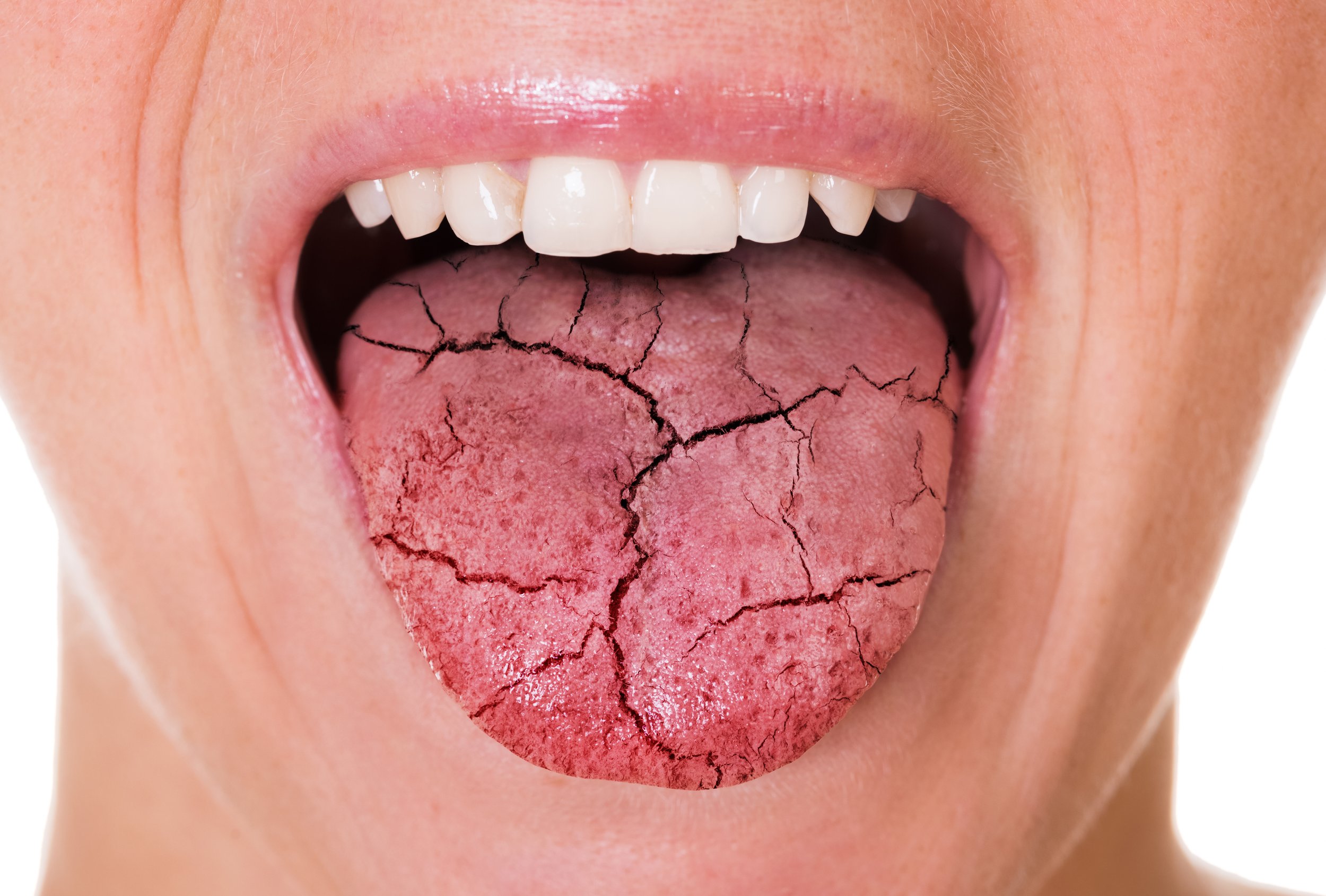A dramatization of dry-mouth. Image courtesy of Adobe Stock.
Drug-induced xerostomia, also known as dry mouth, is a common side effect of certain medications that affects many people. It occurs when there is a reduction in the production of saliva, which can lead to discomfort and other problems. In this blog post, we will explain what drug-induced xerostomia is, what causes it, and what can be done to manage it.
What is Drug-Induced Xerostomia?
Drug-induced xerostomia is a condition in which the production of saliva is reduced due to the use of certain medications. Saliva is important because it helps to keep the mouth moist and comfortable, and it also plays a role in digestion and oral health. When there is not enough saliva, the mouth can become dry and uncomfortable, and this can lead to a range of symptoms, including difficulty chewing and swallowing, bad breath, and an increased risk of cavities.
What Causes Drug-Induced Xerostomia?
There are several classes of drugs that are known to cause xerostomia, including antidepressants, antihistamines, antipsychotics, and certain blood pressure medications. The exact mechanism by which these drugs cause xerostomia is not fully understood, but it is believed to be related to their effect on the nervous system. These drugs can interfere with the signals that stimulate saliva production, leading to a reduction in the amount of saliva that is produced.
What are the Symptoms of Drug-Induced Xerostomia?
The most common symptom of drug-induced xerostomia is a dry, uncomfortable feeling in the mouth. Other symptoms can include:
- Difficulty chewing, swallowing, and speaking
- A sore throat and hoarseness
- Bad breath
- A dry, sticky feeling in the mouth
- Cracked lips and sores in the mouth
- Increased thirst
These symptoms can be very uncomfortable and can interfere with daily activities such as eating and speaking. They can also increase the risk of developing oral health problems such as cavities, gum disease, and oral infections.
How is Drug-Induced Xerostomia Treated?
The treatment for drug-induced xerostomia depends on the underlying cause and the severity of the symptoms. In some cases, simply switching to a different medication that does not cause xerostomia may be enough to relieve the symptoms. In other cases, medications or other interventions may be needed to stimulate saliva production.
There are several medications that can be used to treat xerostomia, including pilocarpine and cevimeline. These medications work by stimulating the glands that produce saliva, which can help to relieve dry mouth symptoms. However, they may not be effective for everyone and can have side effects.
Other interventions that can be helpful for managing xerostomia include:
- Sipping water or other fluids throughout the day
- Using 2% or whole milk when eating to help lubricate food for swallowing
- Chewing sugar-free gum or sucking on sugar-free candy to stimulate saliva production
- Avoiding caffeine and alcohol, which can dry out the mouth
- Using a humidifier to keep the air moist
- Using over-the-counter saliva substitutes or mouthwashes to help keep the mouth moist
In severe cases of xerostomia, a dentist or doctor may recommend other treatments such as prescription-strength fluoride toothpaste or mouth rinses, or dental procedures such as the application of fluoride varnish to help prevent cavities.
Conclusion
Drug-induced xerostomia is a common side effect of many medications that can cause discomfort and other problems. It occurs when there is a reduction in the production of saliva, and can lead to symptoms such as difficulty chewing and swallowing, bad breath, and an increased risk of cavities. Treatment depends on the underlying cause and the severity of the problem.
This blog article was written with the assistance of ChatGPT.

